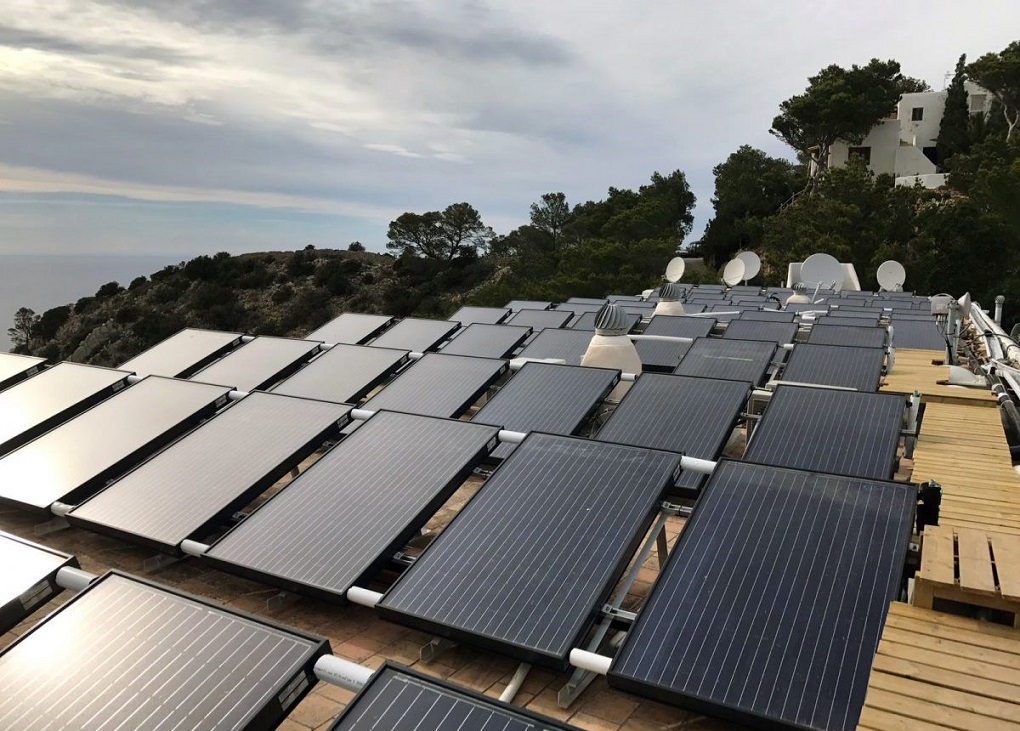A new report from the International Energy Agency Solar Heating and Cooling Technology Collaboration Programme (IEA SHC) indicates that demand for solar heating and cooling is on the rise worldwide for the first time since 2015.
The report, Solar Heat Worldwide, notes that 10 of the 20 largest national markets reported growing sales in 2018. Poland broke all records with a 179 per cent increase in solar thermal installations, driven by clean air support policies in many cities. Denmark is still the leading country for solar district heating, reporting a 128 per cent increase in installed capacity. India ranked third with a growth rate of 17 per cent.
Solar heating and cooling systems in operation globally in 2018 totalled 480GWth (686 million square metres). They saved 43 million tonnes of oil equivalent and avoided 138 million tonnes of CO2 emissions.
“The report highlights the significant impact that solar heating and cooling technologies have on climate protection,” says Daniel Mugnier, Chairman of the IEA SHC Programme. “Solar heating and cooling is a global business with 672,000 people working in this sector and a turnover of around US$16.9 billion in 2017.”
According to the SHC, the growth is due to factors such as improved cost-competitiveness of solar thermal systems, rising interest among commercial and industrial clients, and clean air policies.
Opportunities Down Under
In Australia, demand also grew, albeit by a more modest 2 per cent. According to the Australian representative on the IEA SHC Programme, Ken Guthrie, there is greater potential to use solar heating and cooling in this country.
“The Australian food and beverage industry can significantly improve long-term viability, reduce costs and replace expensive natural gas by installing solar heating systems to provide the large amount of heat used in processing,” he says. Specifically, Guthrie points to dairy factories, fruit preserving, and breweries – where a lot of hot water is used for cleaning – as good opportunities.
“De Bortoli Wines has installed 2,700 evacuated solar thermal arrays to provide heat for the bottling process,” he says. “Internationally, Gosser brewery in Austria has installed a 1,500m2 solar heating field to provide heat directly to the mash churn. In South Australia, the greenhouse at Sundrop farms is heated by solar energy to produce tomatoes, and RayGen in Victoria is supplying solar heat as well as electricity to a mushroom farm.”
Guthrie says there is also room for growth in comfort heating and cooling, and domestic hot water. He points out that SHC already has runs on the board too. Echuca hospital in northern Victoria uses a solar cooling system to provide comfort on hot days without drawing more electricity from an often stressed grid. Monash University in Melbourne has a solar installation that provides heat into its district heating system, meeting the needs of the campus.
Guthrie believes that further growth of solar heating and cooling requires a change of mindset.
“In Australia we focus on electricity rather than heat which often leads to not considering the best opportunities,” he says. “Our focus on supply-side options often miss cost-effective opportunities for onsite renewables to provide heat directly to the end-users. We need to spend more time and resources at the design stage of new projects to provide more innovative solutions such as solar heating and cooling.
“Good examples of operating installations will provide confidence to take up new technologies.”
Featured image courtesy of Endef: 90 PVT collectors provide heat and electricity to a hotel in Spain.
 Mark Vender
Mark Vender


Leave a Reply